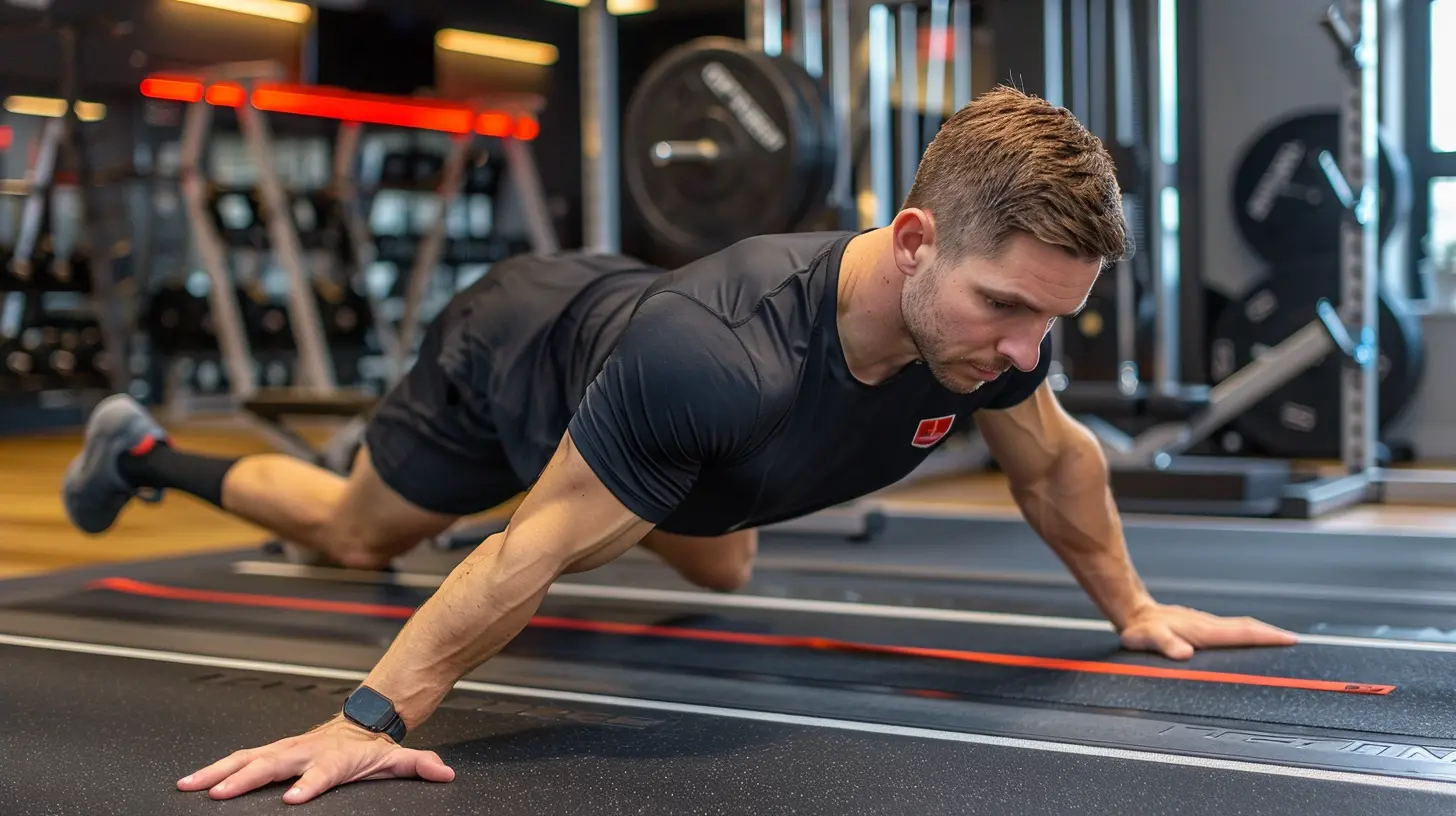How to Stay Injury-Free with Proper Form and Technique
23 June 2025
Ever wondered why some people can train for years without so much as a sprain, while others seem to tweak something every other week? It's no stroke of luck—they’ve figured out the not-so-secret secret: proper form and technique. That's right, it’s not just about pounding the pavement or lifting heavy. It’s how you move that matters.
In this post, we’re diving deep (and I mean deep) into the mysterious world of injury prevention. By the time you're done reading, you’ll be armed with everything you need to keep your body in one piece while still crushing your fitness goals.
The Hidden Dangers of Bad Form
Let’s start with the obvious: poor form is a ticking time bomb.It doesn’t matter whether you’re running, lifting, swimming, or playing pickup basketball—if your form is off, you’re vulnerable. The body has a remarkable way of compensating for bad movement patterns… until it can’t. And then? Snap. Twist. Pull. Ouch.
Ever had knee pain after squats? Or lower back pain after deadlifts? That’s usually your form crying out for help. When your body moves in a way it was never designed to, something's gotta give.
And here’s the kicker: injuries from poor form don’t always happen instantly. Sometimes they creep up on you, gradually eroding your joints, tendons, and muscles until one day you bend over to tie your shoe and—bam—your back gives out.
Spooky, right?
Why Technique Is Your Superpower
Imagine your body as a finely tuned sports car. Would you slam through the gears without understanding how it works? Probably not. You’d learn how to drive it properly to keep it running smooth for the long haul.Same goes for your body.
Good technique isn’t just athletic fluff—it’s your built-in injury insurance. It creates a foundation of stability and control. It ensures your muscles fire in the right order. It helps you move with purpose instead of flailing like a fish out of water.
The truth is, mastering technique makes you more efficient, more powerful, and way more injury-resistant. It’s not about being perfect—it’s about being aware.
The Iron Laws of Injury-Free Training
Let’s break down the core principles you need to follow to stay safe and strong. These are the building blocks of proper form and technique, no matter your sport or training style.1. Posture is King
Everything—and I mean everything—starts with posture.Bad posture is like trying to build a house on a crooked foundation. Sure, you can put up the walls, but eventually, something’s going to collapse.
Whether you're lifting weights or sitting at your desk, your spine alignment matters. Keep your chest open, shoulders relaxed, and core engaged. This forms the base of good form in nearly every movement you do.
Want a simple trick? Stand like someone’s pulling a string from the top of your head. Tall and tight.
2. Warm-Up Like You Mean It
Skipping your warm-up is basically asking for trouble.Warming up isn’t just about breaking a sweat—it’s about prepping your joints, increasing blood flow, and firing up your nervous system. Think of it as greasing the wheels before a big ride.
Dynamic stretches, mobility drills, and light reps of your workout movements should be your go-to. Five minutes of solid prep can save you months of rehab. Worth it, right?
3. Master the Basics Before You Go Beast Mode
Let’s say it louder for the people in the back: Don’t skip the fundamentals.Before you try advanced movements or load up heavy weights, you need to own the basics. That means perfecting things like bodyweight squats, push-ups, planks, and hip hinges.
Why? Because these foundational moves teach you control, balance, and coordination. They lay the groundwork for every complex skill you'll add later.
Trying to do “elite” movements without mastering the basics is like trying to write a novel when you’ve never learned the alphabet.
4. Listen to Your Body (No, Seriously)
Pushing through pain is glorified in sports culture—but it's also super dumb.There’s a big difference between fatigue and pain. Fatigue says, “Hey, we’re working hard.” Pain says, “Something’s wrong.” Ignore that second voice and you’re heading straight into injury territory.
If something doesn’t feel right, stop. Reassess. Maybe your form slipped. Maybe your body needs rest. Be smart enough to listen.
5. Use Mirrors, Videos, and Coaches
We all think we have good form… but what if you’re wrong?The mirror doesn’t lie. Neither does video. Record yourself doing exercises and analyze your movements. Better yet, work with a coach—even just a few sessions can correct years of bad habits.
A trained eye can spot what you can’t. Things like knee tracking, spinal alignment, or shoulder positioning might seem fine to you but scream danger to a pro.
6. Control > Ego
This one’s tough. We all want to push ourselves, beat PRs, and impress the gym crowd. But chasing numbers before mastering form is a recipe for disaster.Leave your ego at the door.
You’ll get far better results doing a movement correctly with less weight than going heavy and sloppy. Slow down, control the motion, and feel each rep. Your joints will thank you.
7. Use the Right Equipment
Wearing running shoes for squats? Huge no-no. Using a barbell when dumbbells would be safer? Maybe not your best move.The right equipment can make a massive difference in your form and safety. Invest in proper footwear for your sport. Use resistance bands for mobility. Don’t be afraid to modify movements or use tools that help you maintain proper alignment.
This isn’t about looking cool—it’s about moving well.
Sport-Specific Tips You Shouldn’t Ignore
Now, let’s dig a little deeper. Because let’s face it—different sports and activities come with different injury risks. Here are some specific form and technique tips to help you stay injury-free in popular athletic pursuits:🏋️♀️ Strength Training
- Squats: Keep knees tracking over the toes. Engage your core like someone’s about to punch you. Chest up, back flat.- Deadlifts: Hinge at the hips, not the lower back. Keep the bar close to your body—if it drifts forward, you’re in trouble.
- Bench Press: Don’t flare out your elbows too wide. Keep shoulder blades pinched back and feet planted.
🏃 Running
- Footstrike: Aim for a midfoot strike. Heel striking can cause jarring impact forces, especially at high speeds.- Cadence: A quicker cadence (about 170–180 steps per minute) minimizes overstriding and reduces injury risk.
- Posture: Upright, relaxed, and slightly leaning forward like you’re being pulled by a string—yes, another string analogy. They work!
🧘 Yoga and Stretching
- Alignment: Don’t chase depth—chase balance. Keep joints stacked and shoulders away from your ears.- Breath: Use your breath to assist movement. If you’re holding your breath, you’re probably pushing too hard.
- Props: Use blocks, straps, and walls to modify poses. There’s zero shame in that game.
🚴 Cycling
- Bike Fit: A poorly adjusted bike leads to knee, hip, and back issues. Get a proper fitting—it’s a game-changer.- Cadence and Resistance: Don’t mash the pedals. Keep a smooth cadence around 80–100 RPM to protect your joints.
- Upper Body: Relax your shoulders and avoid locking out your elbows.
Recovery: The Hidden Part of Form
Bet you didn’t expect recovery to be part of this, right? But here’s the deal—what you do after your workout affects how well you move during it.- Sleep heals and restores muscles.
- Hydration keeps your joints lubricated.
- Mobility work keeps you limber and primed for good form.
All of this ties back into technique. A body that’s tight, tired, and dehydrated is a form disaster waiting to happen.
Common Form Mistakes to Avoid
Let’s shine a light on some of the biggest technique blunders across the board:1. Rounding the back during lifts: You’re not a turtle. Keep that spine neutral.
2. Letting knees cave in: Especially on squats and jumps. Push them out slightly to engage the glutes.
3. Shrugging shoulders under load: This causes neck and shoulder strain. Keep them relaxed and down.
4. Hyperextending joints: Locking out elbows or knees increases wear and tear.
5. Holding your breath: Learn how to breathe through effort—not against it.
When in Doubt, Strip It Back
If you're unsure about your form, go back to the basics.Strip the weight. Simplify the movement. Master every position from the ground up. It’s not a step backward—it’s a giant leap forward in injury prevention.
Think of it like fixing cracks in a wall. Patch them up now, or you’re gonna have a much bigger mess later.
Final Thoughts
Staying injury-free isn’t just about being tough—it’s about being smart. Proper form and technique aren’t some mystical arts. They’re simple principles that, when followed consistently, can keep you moving pain-free for the long haul.So slow down. Check your posture. Listen to your body. Focus on the quality of your movement, not just quantity.
Because in the end, the athletes who last the longest aren’t the ones who push the hardest—they’re the ones who move the best.
all images in this post were generated using AI tools
Category:
Gym TrainingAuthor:

Frankie Bailey
Discussion
rate this article
2 comments
Taylor James
This article brilliantly highlights the critical connection between proper form and injury prevention in sports. By prioritizing technique and understanding biomechanics, athletes can not only enhance performance but also safeguard their long-term health. Implementing these practices is essential for maintaining peak physical condition and enjoying a sustainable sporting experience. Great insights!
November 21, 2025 at 11:32 AM
Winter Gates
Remember, folks: good form is like a good relationship—keep it balanced, avoid awkward positions, and never underestimate the importance of warming up. Stay injury-free and leave the drama for the field!
June 26, 2025 at 4:25 AM

Frankie Bailey
Absolutely! Maintaining good form is essential for both injury prevention and performance. Balance, proper preparation, and awareness make all the difference. Thanks for sharing!


